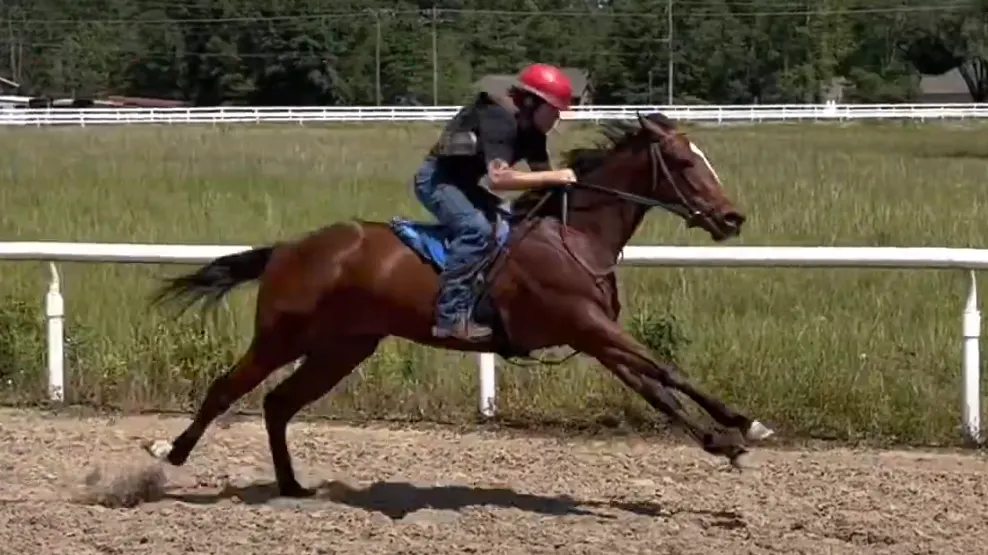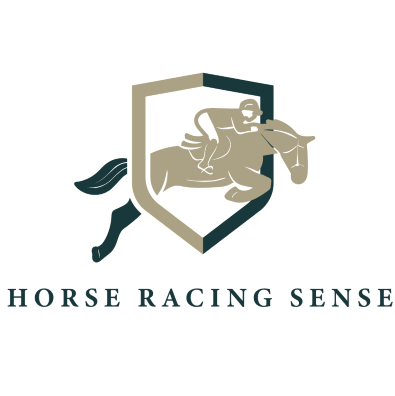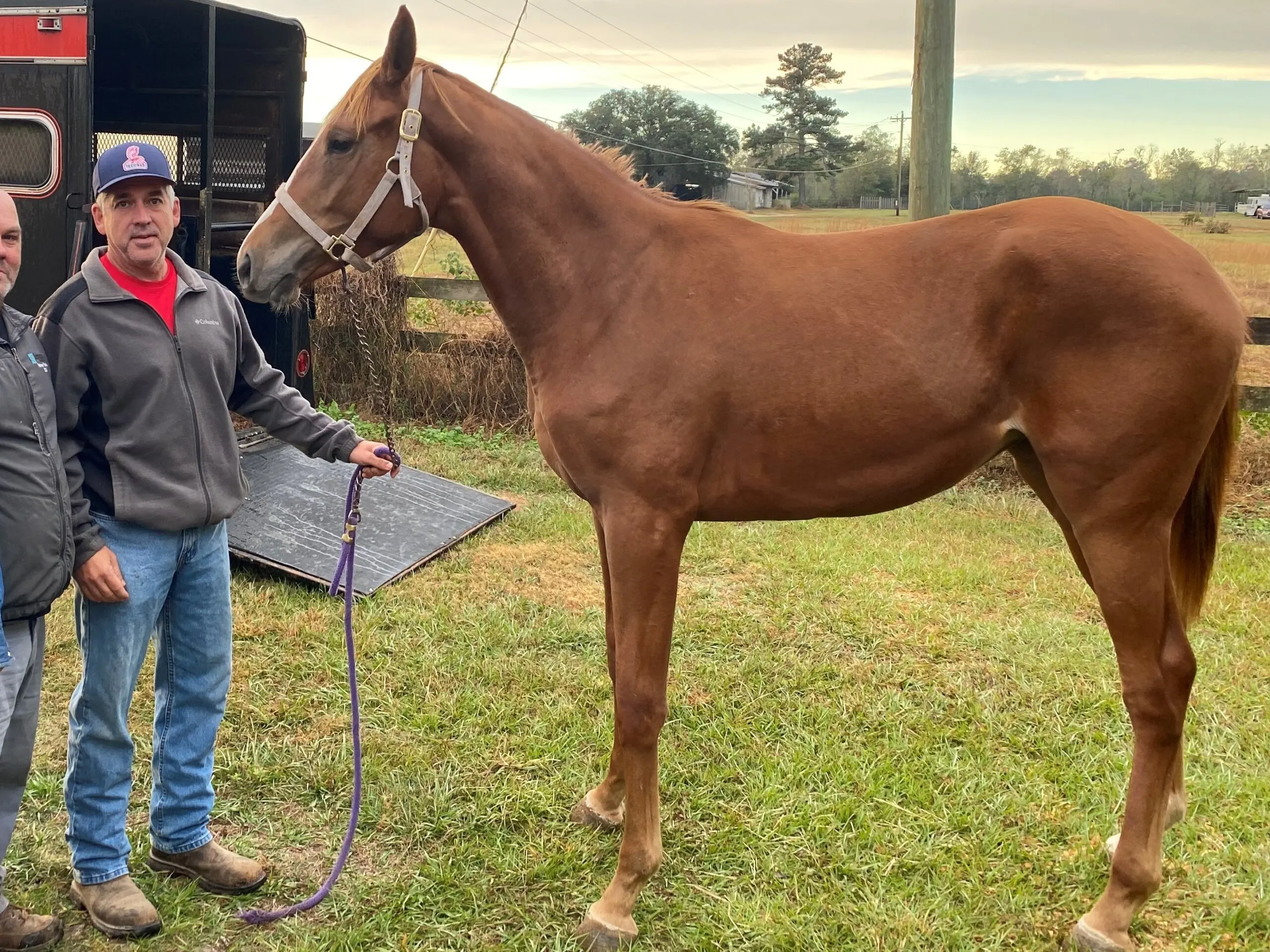Last updated: May 31, 2023
In the vast expanse of Bogue Chitto State Park, we spent the day navigating winding trails on horseback. The rough terrain and the meandering pathways kept us relatively close to our starting point, despite a day spent in the saddle. This experience sparked an intriguing question: How far can a horse travel in a day?
Elite endurance horses can travel up to 100 miles in a day. However, an average horse in good health, given appropriate rest and water breaks, can manage around 50 miles. The capacity for a horse to travel long distances is not based on physical fitness alone but on a myriad of factors such as breed, age, and level of training.
Ready to saddle up for a deeper exploration? As we trot further into this article, we’ll uncover what truly fuels a horse’s ability to journey miles beyond imagination. From diet to terrain, care to rider’s skill, join us as we unravel the mysteries of equine endurance. Let’s hit the trail and discover just how far a horse can travel in a day.
Factors that Influence a Horse’s Ability to Travel Far
First and foremost, horses are individuals and perform differently, even ones of the same breed. Like humans, some may be exceptional athletes, and others may not. But there are some generalities to get an idea about how far horses can travel.

Breed
The breed is one of the factors that can affect a horse’s ability to travel long distances. Different horse breeds have varying levels of physical characteristics that can impact their endurance and ability to cover long distances.
For example, some breeds, such as Arabian horses, are known for their endurance and ability to cover long distances, while others may be more suited to shorter distances due to their body conformation or other characteristics.
It is important to consider a horse’s breed when determining how far they may be able to travel in a single day, as well as other factors such as their fitness level, age, and training.
Fitness
Fitness level is a key factor that affects a horse’s ability to travel long distances. Horses, like all animals, need to be in good physical condition in order to sustain the physical demands of long-distance travel. A horse that is not physically fit will tire more quickly and is at a higher risk of injury or even death if pushed too hard.
On the other hand, a horse that is in good physical condition will be able to sustain a higher level of physical activity and may be able to cover longer distances without experiencing undue strain. Humans train differently for a 100-yard dash than they do for a marathon.
Similarly, horses are prepared based on the distance of their intended travel and uses. Fitness training increases a horse’s capacity to exercise by boosting muscle endurance. Improving fitness is a process; sometimes, it’s a long process. But a lot depends on the horse’s age and fitness level.
It is important to ensure that horses are properly conditioned and trained for long-distance travel and to monitor their condition carefully to ensure that they are not being overworked or pushed beyond their limits.

Training
Training is another factor that can affect a horse’s ability to travel long distances. Horses that have been properly trained and conditioned for long-distance travel will be better able to handle the physical demands of such travel than horses that have not been trained for it.
Training involves a variety of activities, including exercise and conditioning work, that help a horse build up their muscles and cardiovascular endurance, as well as their mental stamina and focus. Proper training can help a horse maintain a good level of physical fitness and condition, enabling them to cover longer distances without experiencing undue strain.
It is important to ensure that horses are properly trained and conditioned for long-distance travel and to monitor their condition carefully to ensure that they are not being overworked or pushed beyond their limits.
Patience is the key, don’t push your horse too fast, or it will sustain an injury and set back the animal’s training. Expect to spend a few months working with your horse to get into peak condition for a long ride.
During the first month of the training, start trotting your horse three times a week for about 45 minutes a day. Be sure to monitor your horse and increase or decrease the exercise’s length and intensity based on your evaluation.
Your evaluation is critical because you don’t want to overstress your animal. It’s much better to back off on training than to have to take time off because of a lameness issue. By the end of the first month of training, your horse should be able to trot comfortably for 45 minutes. During your second month, you want to increase the intensity of the level of your training.
To increase the intensity, incorporate hills one day a week and pick up the pace one day. Work your horse at eight mph for seven miles. Monitor your horses’ recovery time after these works. Your horse’s heart rate should rise to around 180-200, and once your horse is in shape, its pulse rate should recover to 60 bpm within ten minutes of finishing the exercise.
Horses with lower heart rates shortly after exertion perform better on endurance rides. You and your horse should be ready for a reliable twenty-five-mile ride at the end of your second month of training. This training schedule provides building blocks for you and your horse to develop the capacity for longer rides.
Age
Age is another factor that can affect a horse’s ability to travel long distances. Generally, younger horses have more energy and are more physically capable of covering longer distances than older horses. As horses age, their bodies may begin to show signs of wear and tear, and they may not be able to sustain the same level of physical activity as they could when they were younger.
This can be particularly true for horses that are no longer in their prime, as their bodies may not be able to handle the demands of long-distance travel as easily as they could when they were younger.
Gait
A horse’s gait is the pattern of its leg movement when in motion, either walking, trotting, or cantering. Some horses have a naturally smooth and efficient movement. Horses can travel further in specific gaits. Horses with an efficient gait travel further faster while burning less energy than horses with a less effective footfall pattern.
Also, a smooth gait is easier on the rider. Long-distance riders often coordinate movement with their mounts, making riding more tolerable for extended periods. Medieval knights used many different horse breeds when waging war. Some breeds were used during battles, and others for travel.
For example, when the Knights traveled for extended stretches, they chose the palfrey horse to ride. These horses were used for long-distance movement because of their smooth gait.

Tack
Properly fitting tack is essential when riding your horse; this is especially true when traveling horseback for extended trips. Ill-fitting tack will cut the trip short, so make sure your saddle fits your horse correctly. An improperly fitted saddle can damage your horse’s muscles, tissue, and nerves. You also want to ensure the saddle is comfortable because you will be sitting in it for hours.
Use a bit that is familiar to your horse and used in training. A long trail ride is not the time to try out new equipment. Also, frequently check your horse’s girth during the trip. Loosen it during breaks and never overtighten.
Feed and Water
A horse supplied with proper amounts of energy (food) and water will complete a long ride better and recover quicker than horses lacking adequate nutrition. It’s critical to ensure you have water sources on the trail.
If your horse becomes dehydrated, it could suffer severe and permanent damage. If you suspect your horse is overheating, dismount and give it some water; also, remove the saddle and all tack. Give the horse a chance to cool off.
It’s essential to feed your horse a nutritious diet during training and allow it free access to water. Before you take an extended ride, have your horse thoroughly checked by your veterinarian and have blood work performed to ensure your animal isn’t lacking any minerals and is in prime condition.
Terrain
The trail terrain is critical in determining the number of miles a horse travels in a day. Thirty miles of flat, clear paths are more manageable and can be completed faster than thirty miles of rough mountainous terrain.
Our ride in Bogue Chitto State Park was rough and slow. The area was hilly, and frequently we were forced to ride ridges in single-file formation. In the flat sections, low-limbed trees made horse travel extremely difficult. I don’t think we ever exceeded two miles per hour.

Different Types of Horses and Their Typical Endurance Levels
Horses come in many different breeds and types, each with its own unique characteristics and abilities. One factor that can vary among different types of horses is their endurance level or ability to sustain physical activity over long periods.
Some horses are known for their exceptional endurance and are able to cover long distances with ease, while others may be better suited to shorter distances due to their physical characteristics or other factors.
In this section, I explore some examples of different types of horses and their typical endurance levels, including competitive endurance horses, trail horses, and working horses.
Competitive endurance horses
Endurance horses are a type of horse that is specifically bred and trained for long-distance endurance events. These events typically involve covering distances of up to 100 miles or more in a single day and may include multiple days of travel.
Competitive endurance horses are known for their exceptional endurance and stamina and are able to cover long distances at a steady pace without experiencing undue strain.
They are generally in excellent physical condition and have been carefully trained and conditioned for the demands of endurance competition. Some common breeds of endurance competitor horses include Arabian horses, Thoroughbreds, and Mustangs.
Trail horses
Trail horses are another type of horse that is known for their endurance and ability to travel long distances. These horses are generally used for leisure riding and exploring trails and are able to cover distances of up to 50 miles or more in a single day.
Trail horses are typically in good physical condition and can maintain a steady pace for extended periods, although they need more breaks for rest and water than competitive endurance horses.
Some common breeds of trail horses include Quarter Horses, Mustangs, and Gaited breeds. It is important to note that the specific endurance level of a trail horse can vary depending on their age, training, and overall health.
Working horses
Working horses are generally used for various tasks, such as farming, ranching, and transportation, and may be required to cover significant distances in a single day. Working horses are typically in good physical condition and can maintain a steady pace for extended periods.
For example, horses in New Orleans pull tourists in carriages around the French Quarter from morning until late at night. Some common breeds of working horses include Draft breeds, Standardbreds, and quarterhorses.
In general, most working horses are able to cover 20-25 miles in a single day without experiencing undue strain. However, the speed at which they travel and the terrain they are traveling over can also affect the distance they can travel.
It is important to ensure that working horses are properly conditioned and trained for the demands of their work and to monitor their condition carefully to ensure that they are not being overworked or pushed beyond their limits. It is also essential to consider the specific needs and abilities of the individual horse when determining how far it can travel in a single day.

How Far Can A Horse Travel?
Horses can travel for thousands of miles if appropriately trained and equipped. Just don’t push them too hard. In 1911, Nan J. Aspinwall traveled on horseback from San Francisco to New York. The trip took her 178 days and covered 3,200 miles.
Horses traveling for extended periods typically travel slower than horses going on a one-day trip. Groups, such as Calvary, that planned to be on horseback for weeks usually traveled 20-30 miles daily.
However, horses intended for one day of travel can efficiently complete 50-60 miles, but the animal may not endure a consecutive day of riding until it gets a day or two of rest.
How far can a horse travel in a week?
A horse can travel a long way in a week, depending on a few factors. If the horse is in good health and the weather is cooperative, it can easily cover 25 to 30 miles daily. That means that, over the course of a week, a horse could theoretically travel 175 to 210 miles.
Of course, in practice, horses are often asked to travel shorter distances so that they can rest and graze along the way and give riders a break. Sitting in a saddle eight or more hours a day for seven days straight is tough on one’s body.
But even at a more moderate pace of 10 to 15 miles per day, a horse could still cover 70 to 105 miles in a week. However, these are just averages, and some horses may be able to cover more ground while others may not be able to cover as much.
It also depends on the terrain that the horse is traveling over. If the horse is traveling over rough terrain, it will not be able to cover as much ground as if they are traveling over smooth terrain.
In addition, the horse’s age and health will also play a role in how far they can travel. A young, healthy horse will be able to travel further than an older horse that is not in as good of condition. Ultimately, it is up to the horse’s owner to determine how far their horse can travel in a week.
Below is a YouTube video of horses racing 100 miles in the Tevis Cup 2021
Understanding Horse Endurance Racing
Imagine the excitement of watching a marathon, but instead of human athletes, picture powerful horses racing over incredibly long distances. Welcome to the exhilarating world of horse endurance racing, an equine sport that pushes horses and riders to their very limits.
Endurance racing is not a typical horse race you might picture with a quick dash around a track. Instead, it’s a test of stamina, speed, and strategy, with horses covering distances that can range from 25 to 100 miles or even more.
The competitors aren’t just running at top speed but carefully pacing themselves to endure for the long haul. It’s like a marathon for horses, and just like human marathons, the speed in these races varies, often depending on the distance of the race and the terrain.
Preparing a horse for such an event is a process that requires careful planning and intense training. The horse’s diet may be adjusted to ensure optimum nutrition, and a regular exercise regimen is put into place to gradually increase the horse’s fitness and endurance levels.
Training also involves teaching the horse to pace itself, as well as conditioning it to the different terrains it might encounter during a race. It’s a true testament to the bond between the rider and horse as they work together to prepare for the arduous yet thrilling challenge of endurance racing.
Conclusion
As we trot to the end of this exploration, it’s clear that answering ‘how far can a horse travel in a day?’ isn’t as simple as throwing out a number. It’s a dynamic answer, intertwined with factors such as fitness level, breed, age, and training, not to mention the horse’s overall health and the terrain it has to navigate.
We’ve also taken a fascinating detour into the world of endurance racing, where the strength, speed, and stamina of horses are put to the ultimate test. These races are a testament to not just the impressive physical capabilities of horses but also the remarkable bond between horse and rider.
Whether it’s a casual trail ride in the park or a hundred-mile race, horses are truly incredible, capable of impressive feats of endurance. The next time you see a horse, consider the extraordinary distance it could cover in just a day.
FAQ
What is the fastest a horse traveled 100 miles?
The fastest a horse and rider traveled 100 miles is 5:45:44 seconds, set by Yousuf Ahmad Al Belushi on an eleven-year-old gray gelding named Jayhal Shazal. The team averaged 17 mph; what a fantastic feat.
How Fast Does a Horse Travel?
Horse breeds and sizes affect how fast they travel. But generally, horses walk a little less than four miles per hour.
They trot between five miles an hour and up to eleven miles an hour. They can travel at a gallop between fifteen and twenty-five miles an hour.
How fast can a horse run?
Horses can run 55 mph; a Quarter horse sets this record; however, a fit horse that is bred for running can typically reach speeds of 30-35 mph.
In contrast to the quarter-horse record, The Guinness World Records list a two-year-old thoroughbred named Winning Brew as the world’s fastest horse, clocking a speed of 43.97 mph.
Meet Miles Henry
An avid equestrian and seasoned racehorse owner, Miles Henry brings his extensive experience to the equine world, proudly associating with the AQHA, The Jockey Club, and various other equine organizations. Beyond the racetrack, Miles is an accomplished author, having published various books about horses, and is a recognized authority in the field, with his work cited in multiple publications.
🔗 Connect with Miles:
Twitter
Facebook
YouTube: Check out race highlights, horse care tips, and more!

